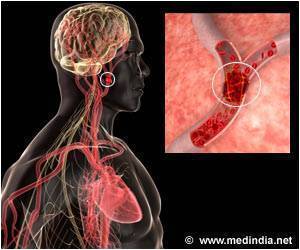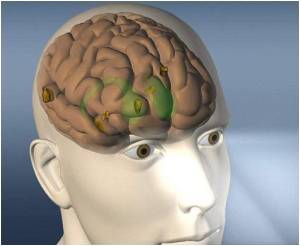Graphene - a new and highly advanced metamaterial may lead to new applications in the diagnosis and treatment of neurological diseases, says study published in Congress of Neurological Surgeons.

Graphene Has 'Extremely Remarkable' Properties An artificially engineered "metamaterial"—with properties not typically found in nature—graphene is composed of a single layer of carbon atoms in a "honeycomb lattice" pattern. The developers of graphene were awarded the Nobel Prize in Physics in 2010; massive resources are being invested in its further research and development.
Graphene has a number of "extremely remarkable" properties that make it unlike any other material. It combines the greatest mechanical strength ever measured in any material— natural or artificial—with very light weight and high elasticity. Graphene also has unique optical and photothermal properties which, among other things, allow it to release energy in the form of heat in response to light input.
In addition, graphene has very high electrical conductivity, as well as a high surface area allowing "efficient bioconjugation" with common biomolecules. A few years ago, graphene was one of the most expensive materials on Earth. However, as industrial production increases, it is dropping rapidly in price.
Graphene is being developed for use in a wide range of technologies, such as flexible liquid crystal displays and electronic devices, new types of integrated electric circuits, and lithium-ion microbatteries—to name just a few. It also has great promise for use in various types of biomedical devices, several of which are relevant to conditions treated by neurosurgeons.
With Many Promising Applications in Neurosurgery Mattei and Rehman discuss some of the frontline scientific research being done to explore the capabilities and potential uses of graphene. As development continues, graphene-based metamaterials could contribute to advances in several areas of neurosurgery, including:
- Cancer Treatment. Graphene nanoparticles may play a role in tumor-targeted imaging, as well as possible new therapeutic approaches involving photothermal or alternating electrical field stimulation therapies.Advertisement
- Intensive Care Unit Monitoring. New electrochemical and optical biosensors may provide new approaches to neurologic monitoring in patients with stroke or traumatic brain injury.
- Neuroregeneration. Graphene materials may be used in new strategies to promote regeneration of nervous system tissues—for example, graphene-coated scaffolds to stimulate growth of injured peripheral nerves.Advertisement
- Functional Neurosurgery. Improved electrophysiological monitoring systems may help in performing precisely targeted brain surgeries in patients with conditions such as epilepsy and movement disorders.
- Spinal Surgery. High-resistance graphene-based hardware may represent the next generation in instrumentation for spinal surgery.
Source-Eurekalert









